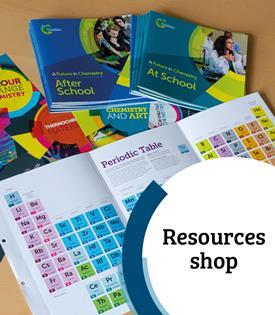All Class experiment articles – Page 9
-
 Class experiment
Class experimentHeating copper in air
Explore the reaction of copper with oxygen, producing copper oxide, when a copper envelope is heated in air in this practical. Includes kit list and safety instructions.
-
 Class experiment
Class experimentMelting and freezing stearic acid
In this class practical students take the temperature of stearic acid at regular intervals as they heat and cool it. Includes kit list and safety instructions.
-
 Class experiment
Class experimentRate of evaporation
Use this class practical to measure and compare the rate of evaporation of propanone under different conditions. Includes kit list and safety instructions.
-
 Class experiment
Class experimentSolubility trends of metal halides
Investigate patterns in the solubility of halides of silver and some Group 1 and 2 metals in this microscale practical. Includes kit list and safety instructions.
-
 Class experiment
Class experimentSolubility patterns of halogen anions
Try this microscale practical to identify and explain patterns in the solubility of fluoride, chloride, bromide and iodide anions. Includes kit list and safety instructions.
-
 Class experiment
Class experimentDiffusion in liquids
Demonstrate that diffusion takes place in liquids in this practical using lead nitrate and potassium iodide. Includes kit list and safety instructions.
-
 Class experiment
Class experimentDissolved substances in tap water and seawater
Compare the solids and gases dissolved in tap water and seawater in this class practical and demonstration. Includes kit list and safety instructions.
-
 Class experiment
Class experimentMaking a crystal garden
Create chemical gardens with your students by growing crystals of coloured silicates in this class practical. Includes kit list and safety instructions.
-
 Class experiment
Class experimentPreparing an insoluble salt in a precipitation reaction
Produce an insoluble salt precipitate by reacting two soluble metal salts together in this class experiment. Includes kit list and safety instructions.
-
 Class experiment
Class experimentOxidation of ethanol
In this class practical, ethanol is oxidised by acidified sodium dichromate to form ethanal and then ethanoic acid. Includes kit list and safety instructions.
-
 Class experiment
Class experimentDisplacement reactions of non-metals
Investigate a displacement series of non-metals using oxygen and chlorine in this class practical or demonstration. Includes kit list and safety instructions.
-
 Class experiment
Class experimentHow much oxygen is used when iron wool rusts?
Try this practical to investigate how much oxygen is used in rusting and calculate the percentage of oxygen in air. Includes kit list and safety instructions.
-
 Class experiment
Class experimentDehydration of ethanol to form ethene
Use this class practical or demonstration to produce ethene gas as an example of an unsaturated hydrocarbon. Includes kit list and safety instructions.
-
 Class experiment
Class experimentMicroscale preparation of ethyl benzoate
Try this class practical to prepare the ester ethyl benzoate on a microscale by warming ethanol and benzoic acid. Includes kit list and safety instructions.
-
 Class experiment
Class experimentThe reaction of carbon dioxide with water
Form a weak acid from the reaction of carbon dioxide with water in this class practical. Includes kit list and safety instructions.
-
 Class experiment
Class experimentProperties of alkali metal compounds
Try this class practical to explore the physical and chemical properties of various alkali metal compounds. Includes kit list and safety instructions.
-
 Class experiment
Class experimentEquilibria involving carbon dioxide in aqueous solution
Use this demonstration or class practical to illustrate changes to equilibria in carbonated soda water. Includes kit list and safety instructions.
-
 Class experiment
Class experimentModelling alloys with plasticine
Try this class activity to explore how alloying can be used to change the properties of a metal. Includes kit list and teaching notes.
-
 Class experiment
Class experimentComparing the melting points of solder, tin and lead
Test the melting points of lead, tin and solder to investigate solder as a solid mixture and alloy in this practical. Includes kit list and safety instructions.
-
 Class experiment
Class experimentWhat ions cause hardness in water?
Investigate how different cations and anions in dissolved salts affect the formation of a lather in this experiment. Includes kit list and safety instructions.











